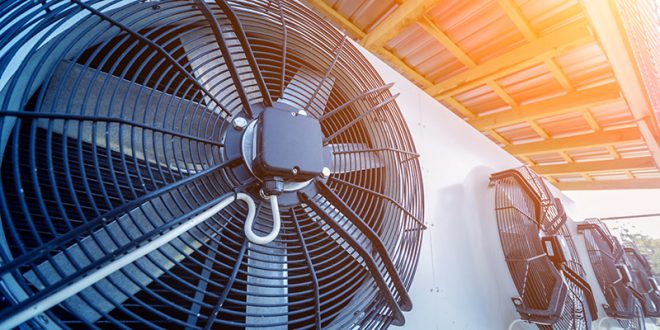An important part of controlled-environment potato stores, is the ability to regulate temperature, which can be achieved using ambient air and/or mechanical cooling (refrigeration). Internal recirculation of air can also be used to eliminate temperature variation, which is an equally important step to manage condensation risk.
Airflow should be as uniform as possible throughout the store, to give even drying and maintain stable crop temperatures. A well-designed store should be able to achieve uniformity of airflow at its typical operating condition. This might include features such as graduated outlets or suction slots to ensure similar airflow across the whole store.
Several factors can influence temperature management for stored potatoes. These include: whether the potatoes are to be marketed for processing, as fresh table stock, or as seed; the temperature of the tubers at the time they are placed in storage; the length of time the tubers are to be stored; the extent of tuber damage at harvest; and the presence of disease organisms.
Automation is King
Dr. Gavin Lishman, managing director of Martin Lishman Ltd., says their Barn Owl Wireless system gives the user the ability to wirelessly monitor the temperatures at all levels in potato boxes or bulk-stored potatoes and automatically control ventilation systems.
“Fans are controlled independently and automatically according to the stored commodity temperature and ambient conditions using a selection of cooling and drying programs. The programs control the fans so that only air good enough to cool or dry the commodity is used for ventilation. Since fans are only being used when it is most efficient to do so, this significantly reduces the energy required to cool or dry,” Lishman explains.
Due to the scale of potato storage facilities, Barn Owl Wireless utilizes wireless components to make installing and moving sensors easy, the specialist adds. Drying and cooling potatoes when they are first put into storage must be done as quickly as possible, so the system only cools or dries when it is most efficient to do so, ensuring faster cooling and drying with lower energy costs.
According to the company, Martin Lishman’s automatic control systems can be used to operate any type of ambient ventilation or cooling system. Control parameters such as air and crop temperature and the differential between the two can be adjusted in either case to suit the desired outcomes.








